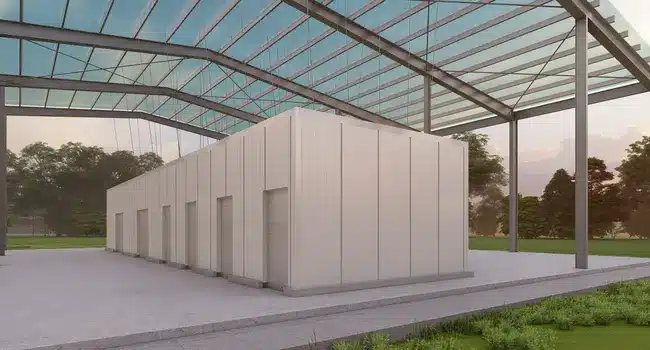The construction business has been revolutionized by metal-insulated panels, which offer a combination of efficiency, durability, and sustainability. The development of metal insulated panels has been extremely amazing, beginning with their humble beginnings and culminating in their widespread application in contemporary construction projects. Within the scope of this essay, we look into their history, development, and the profound influence they have had on construction techniques all over the world.
Origins And Early Development
In the middle of the 20th century, metal insulated panels, which are frequently abbreviated as MIPs, were first introduced to the market. The initial purpose of these panels was to provide a solution for industrial cold storage facilities. They were constructed with a metal skin that was sandwiched between an insulating core. Comparing this straightforward yet efficient design to more conventional building practices, the thermal performance of the structure was significantly higher.
Advancements In Manufacturing
Over the years, sip panel manufacturers have continually refined their manufacturing processes, resulting in higher-quality metal insulated panels. Technological developments have made it possible to produce panels with exact measurements, better insulating qualities, and increased structural integrity. These innovations have expanded the applications of metal insulated panels beyond cold storage to include commercial buildings, residential homes, and even modular construction projects.
Sustainable Solutions
As the construction industry increasingly prioritizes sustainability, metal-insulated panels have emerged as a preferred choice for environmentally-conscious builders. The energy efficiency of controlled environment panels helps reduce heating and cooling costs, while their long lifespan minimizes the need for frequent replacements. Additionally, many metal insulated panels are manufactured using recycled materials, further reducing their environmental impact.
Versatility In Design
One of the key advantages of metal insulated panels is their versatility in design. Architects and builders can customize panel thickness, finish, and color to meet the specific requirements of each project. This adaptability enables the construction of architecturally remarkable structures without sacrificing excellent thermal efficiency or structural integrity. From sleek modern facades to rustic industrial designs, metal insulated panels can complement any architectural style.
Enhanced Building Performance
Numerous performance advantages provided by metal insulated panels raise the standard of construction projects as a whole. Their superior insulation properties help regulate indoor temperatures, improving occupant comfort and reducing energy consumption. Additionally, the tight seals between panels minimize air leakage, preventing moisture infiltration and reducing the risk of mold growth. These factors result in buildings that are not only more energy-efficient but also healthier and more comfortable to inhabit.
Future Trends And Innovations
Looking ahead, the evolution of metal-insulated panels in construction shows no signs of slowing down. Manufacturers continue to invest in research and development to further improve panel performance, durability, and sustainability. Emerging technologies, such as integrated solar panels and smart building systems, are being integrated into metal-insulated panels, offering even greater energy efficiency and functionality. The growing need for eco-friendly building solutions means that metal-insulated panels will be crucial in determining how construction is done in the future.
Conclusion
The development of metal insulated panels has revolutionized the planning, construction, and maintenance of buildings. From their humble beginnings as a solution for cold storage facilities to their widespread use in commercial and residential construction, metal-insulated panels have come a long way. With advancements in manufacturing, sustainability, design versatility, and building performance, these panels have become an indispensable component of modern construction projects. As we look to the future, the continued innovation and adoption of metal-insulated panels will undoubtedly drive further advancements in the construction industry.
